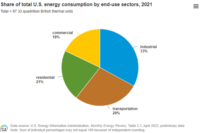PODCAST: Non-residential Building Envelope Energy Performance on the Road to Decarbonization

Tom Harris, of Tom Harris PUR Consulting LLC, returns for another discussion with W&C.
Harris says contractors are missing an opportunity with insulation, spray foam, air barriers, WRBs, weatherstripping, caulking and more because it’s all about improving or maintaining the performance of the building envelope.
“Just the envelope—the shell of the building, the physical thing that separates the outside from inside, the controlled from the uncontrolled and defines the conditioned space. It comes with, or came with a specific design intent—it’s supposed to be living up to the promises made when it was built, but we seem to forget that things age, they deteriorate and the performance lessons,” Harris says.
In 2021, a DOE study stated that commercial buildings alone accounted for 18 percent of the total U.S. energy consumption—residential buildings was only slightly ahead of that number at 21 percent. But the important bit is that the building envelope accounts for approximately 30 percent of the primary energy consumed in commercial buildings.
“There is an opportunity to take a bite of the carbon reduction elephant by simply addressing the building envelope,” says Harris. “If we look at Big ESCO companies – the ones offering guaranteed energy savings, they’ve been working the space for years and have done a great job with macro projects, whole building, even community energy reduction strategies. But, these activities are expensive and often take years to implement. Not every building owner or operator has the capital or frankly the motivation to spend that kind of money to do the investigation.”
Looking for a reprint of this article?
From high-res PDFs to custom plaques, order your copy today!








